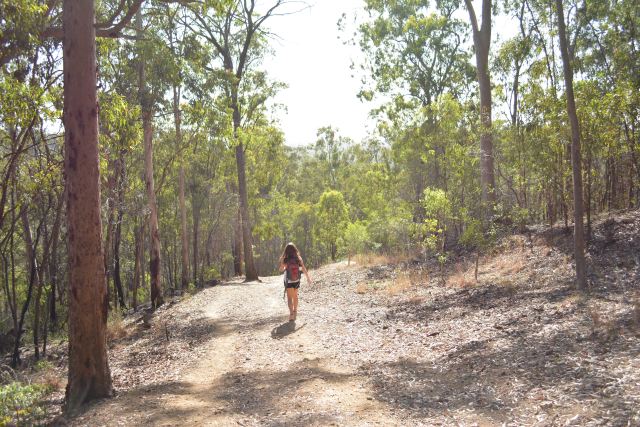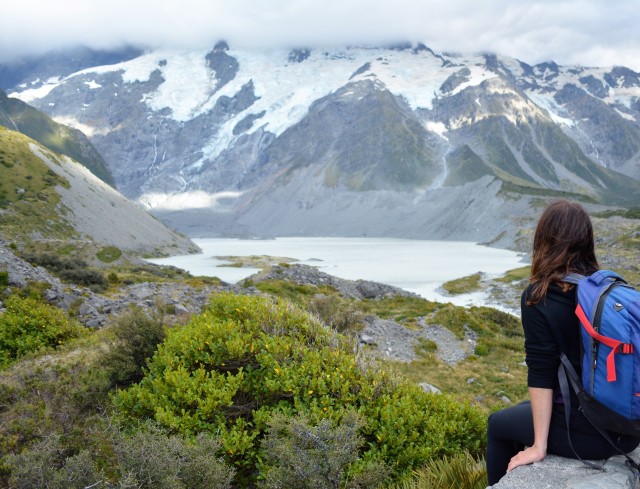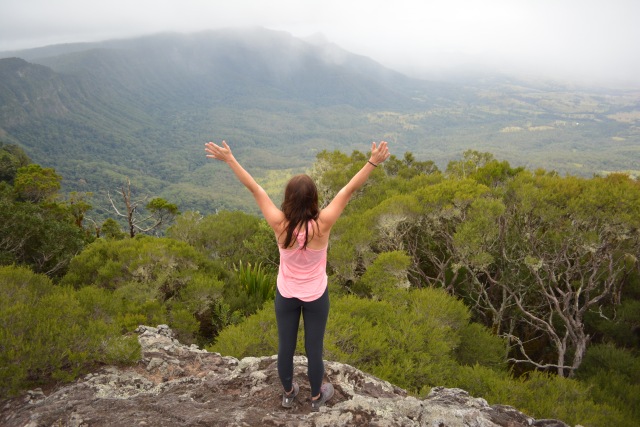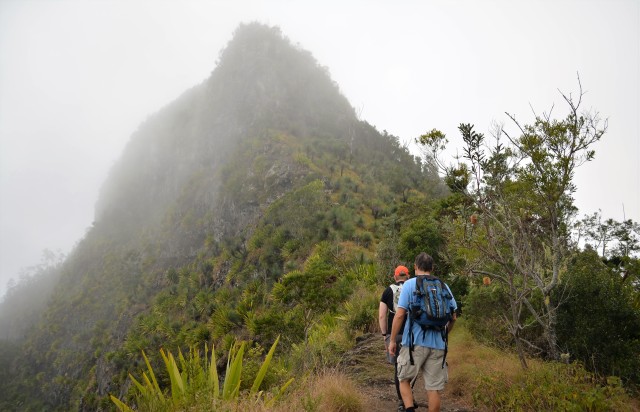
I was recently talking to a friend who is new to the hiking game. She mentioned it would be great to have a guide on hiking tips for people starting out so they know what to expect when they hit the trail. You asked for it and here it is – the beginner’s guide to hiking.
Have the right gear

Before you go anywhere near a hiking trail, make sure you have the right gear. Hiking is a serious business – trails can be steep, slippery or on cliff edges; there could be wildlife; and weather is also a consideration.

This is what I recommend you have before hitting a hiking trail:
- Good shoes. Hiking boots aren’t essential unless you have weak ankles. In fact, I don’t own a pair. I’ve done a lot of day hikes, some very hard, but find hiking boots too heavy and clumsy so I stick to trail shoes. You mostly want something that has a good grip. Running shoes will be useful for short easy-moderate hikes, especially beginners, but if you’re serious about it, look for some trail shoes. My favourite brand is Ecco.
- A backpack with adjustable straps, water bottle, first aid kit (fill it with alcohol wipes, bandaids, small bandage and Stingose for any insect bites) and insect repellent. I recommend carrying at least 1-2 litres of water with you depending on the duration of your hike and also some snacks. A piece of fruit, nuts and a muesli bar should do the trick if you’re hiking for a couple of hours – if you’re doing a longer hike, consider bringing something like a sandwich as well.
- A hat and sunscreen.
- In regards to clothing, some light compression type pants are good if you’re worried about insects, long grass or plants such as stinging nettles on the track – and also to help with muscle fatigue and recovery. If you’re hiking up mountains, it’s recommended to bring a sweater/jumper with you in case the weather turns.
Other items you may want to consider is a rainjacket if you’re hiking in rainforest areas and a small torch or headlamp.
There’s easy and hard hiking trails

Going for a hike doesn’t have to be difficult – start small to begin with. Take short and easy trails and gradually build up to see what the best level is for you. You may want to stick to flat trails, or challenge yourself to steeper trails. Many of the trails throughout Australia (and many other countries I’ve hiked in across the world) are well marked and signed by national park authorities.
Research before you go to find a trail that suits your ability. You’ll find trail maps for popular national parks online and many are detailed on grade and distance.

There may be insects and wildlife
A reality of hiking is the insects (especially in Australia) – mosquitoes, ants, flies, snakes, spiders, leeches and ticks are the biggest concern. Bears are another thing you need to be concerned with if you’re hiking in parts of Europe and North America.
But don’t let that put you off – I hike a lot in Australia and overseas and have only seen a couple of snakes and they’ve slithered off as I’ve approached. I once saw a bear in Vancouver but there were lots of people around. The other things for the most part annoying and there are ways to prevent them.
Leeches and ticks are fairly common. You can guard against them with some insect repellent and covering yourself up as much as possible by wearing long pants and long sleeves if hiking in a particularly wet area to try and guard against leeches or a dry area for ticks.
I use Bushman’s insect repellent and also carry a bottle of salt with me when I hike. If I do get a leech on me, a sprinkle of salt seems to work to get it off me. I have abandoned a walk once because of too many leeches though – so sometimes you have to be flexible.
Check yourself for ticks and leeches at the end of your hike.
Snakes are particularly common from around November to March in Australia. Be on guard and when possible, hike with someone else.
In New Zealand, the sandflies seem to be your biggest enemy so definitely wear insect repellent to ward them off – their bites itch like crazy.
Where bears are prevalent, never go alone and carry bear spray. Consider hiring a guide. I’ll be hiring a guide when I go hiking in Romania this year due to the threat of bears.

Check the weather forecast before you go
If there’s heavy rain forecast, it’s best to save your hike until another day. Hiking trails can get very slippery and that means they’re dangerous. There’s also the danger of flash flooding if you’re hiking near a river or creek.
Keep an eye on the weather. If you’re hiking in the mountains, watch out for storms. In the summertime when storms are likely as the day wears on in, plan to head out early with a lunchtime – early afternoon return but regularly check if there’s any storm clouds approaching.
If you see the weather start to turn, get out of there. A mountain summit is not the place you want to be in a storm.

Carry an emergency beacon and tell someone where you’re going and when you’ll be back
If you’re doing a lot of moderate to hard hikes, I recommend you invest in a personal locator beacon (PLB). If you get into trouble such as hurting yourself badly on the track or getting lost, you can activate your beacon to alert emergency authorities. A beacon works even if there’s no mobile reception. A distress beacon should be activated in situations of grave and imminent danger.

I recommend buying a GPS enabled beacon. This means emergency authorities can detect your position within minutes. In Australia, it’s also important to register your beacon with the Australian Maritime Safety Authority (AMSA). This will also assist in getting help to you as soon as possible.
For more information on buying and registering a beacon in Australia, go to www.amsa.gov.au/beacons There’s also some generic information on this site about beacon types and how beacons work.
Search and rescue agencies in other countries will also have handy information about beacon types, use and any regulations pertaining to their carriage and use.
I recommend you hike with someone at all times, but if you do choose to hike alone, make sure you tell someone where you’re going and when you expect to be back.
It’s important to stay hydrated
Always make sure you have plenty of water. There may not be freshwater streams on the trail so don’t rely on it. As a guide, I take about two litres with me for a 10km hike and also leave another litre or so in my car.

Take your litter out with you and respect the trail
Stick to the trail and take all your litter out with you. Going off the trail causes erosion, can damage flora and wildlife habitats, and can also lead to you getting lost. Leave the trail as you found it so others can enjoy it.
Hiking is an amazing way to see the world (and it can be addictive)

Hiking is a great way to explore. You reach places that cars can’t reach and you see sights that not everyone gets to see. You’re out enjoying nature and the sunshine and getting a workout and earning endorphins in a way that doesn’t feel like exercise. It certainly beats the gym.

Some of the most beautiful places I’ve ever been were seen by working up a sweat and climbing a mountain. It’s rewarding and I love it and I can’t get enough of it. The more I hike, the more I want to hike and I’m continually looking for new places to explore.
What do you think? Are you a regular hiker and have some tips to add? Or are you just starting to hike – do you find these tips useful?

